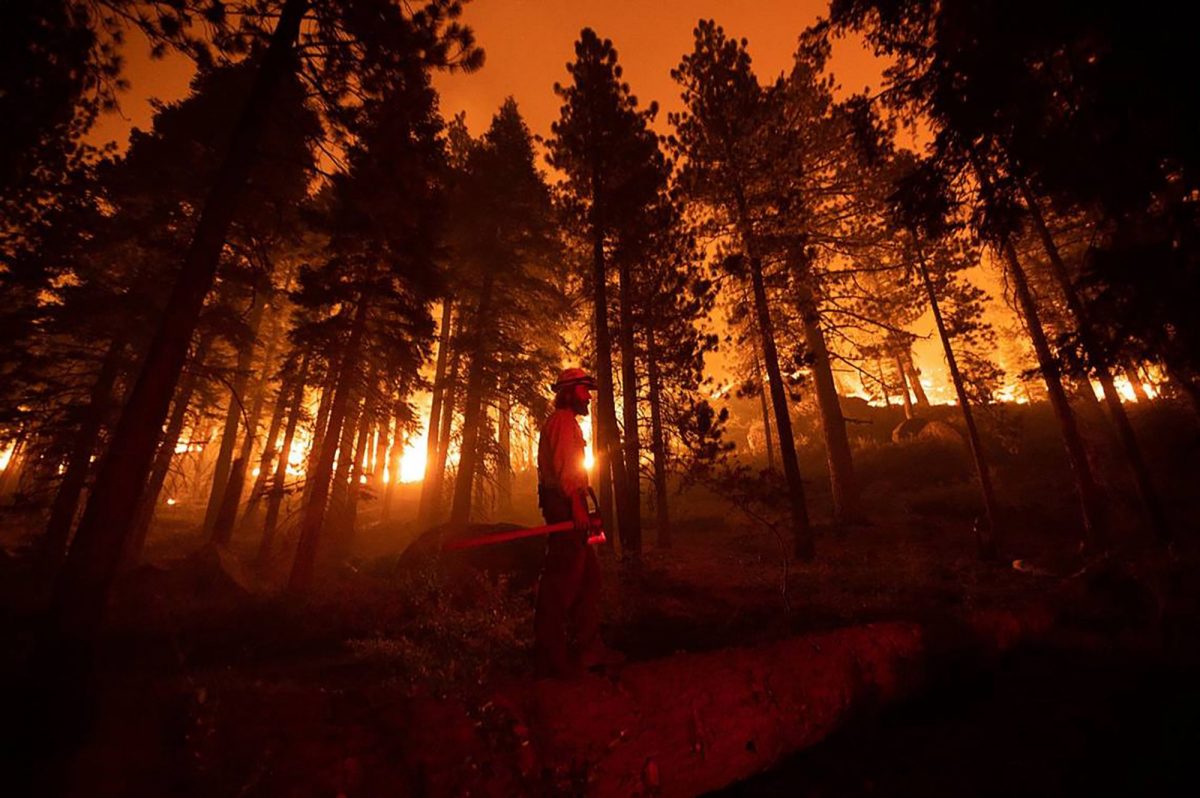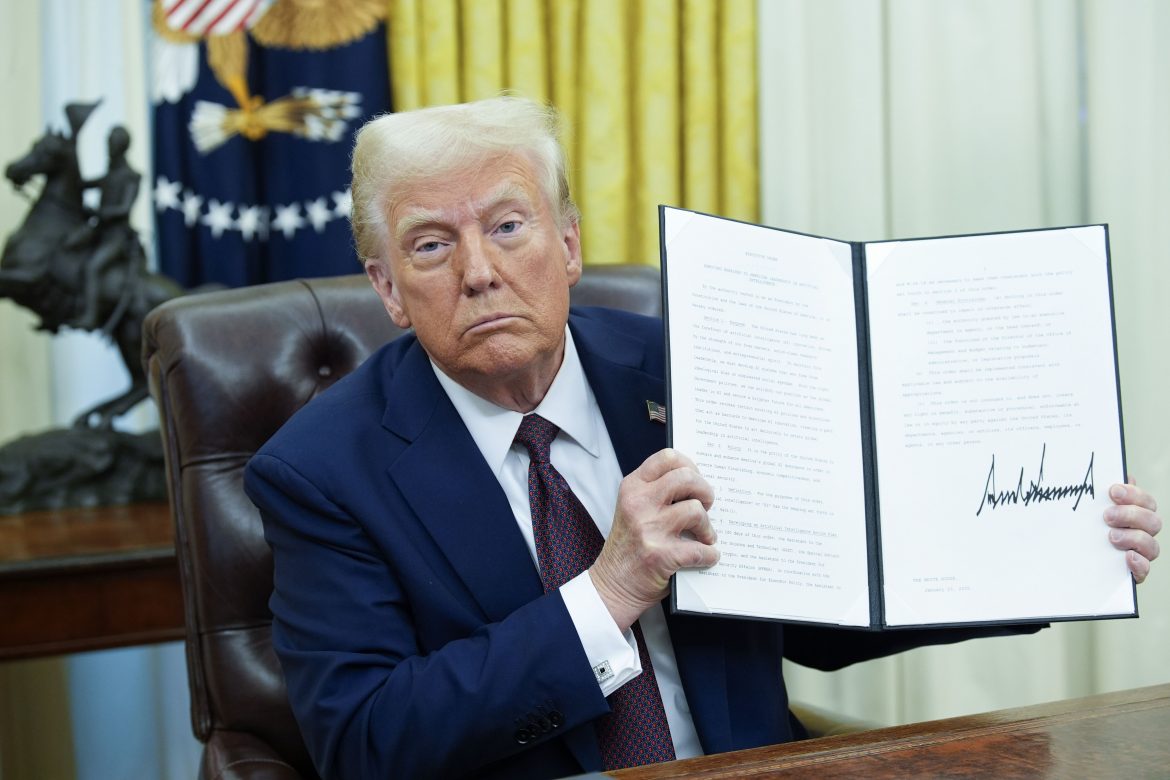What will the world look like in 2050?
Predictions about the future are rarely accurate. Who in the year 2000 could have imagined what the world would look like today?
However, there is one thing we can be confident about: the world is getting warmer.
As one of his first acts of his second term, Donald Trump vowed to withdraw from the Paris Climate Agreement, which sets a target to limit global warming to 1.5°C above pre-industrial levels.
In his inaugural address, the President declared that America will “drill, baby, drill”, simultaneously declaring a national energy emergency to undo many of the environmental regulations imposed by his predecessor.
This comes after 2024 was crowned the hottest year on record — and the first to break the 1.5°C barrier.
This can partly be explained by weather patterns such as El Niño, but scientists agree greenhouse gas emissions are in no small part responsible.
However, this does not mean the targets set at Paris have failed, since that requires observing the average temperature over decades.
What does this mean for the planet?
Climate scientists use different scenarios, called RCPs, to model different climate outcomes based on emissions. In the ‘worst case scenario’, average global temperatures could shoot past the Paris targets and reach 2.5°C by 2050.
“As climate scientists, we’re physicists at heart,” said Dr Zeke Hausfather, a research scientist at Berkeley Earth. “But when we’re talking about emissions, it’s like looking into a cloudy crystal ball.”
Because of this, climate modellers have also devised five narratives, or SSPs, that set the stage for how humanity will, or will not, reduce emissions.
Hausfather said: “The idea with SSPs is to explore different socioeconomic and technological assumptions on which our models are based.”
He added: “We can test how difficult it is to mitigate and adapt to global warming based on the assumptions we put into it.”
These narratives range from global development in cheap, clean energy production to a fragmented world of resurgent nationalism, where little is done to develop cost-effective low-carbon energy sources and emissions and global temperatures continue to rise.
“I think all things being equal, a scenario like that is less unrealistic than previously thought,” said Hausfather. “But it’s important to note that we’re talking about a single country for a four-year term — assuming the constitution holds. It doesn’t help, but it certainly doesn’t spell doom.”
The impact of climate change
“At present rate, we will reach 2°C of warming within 20–25 years,” said Sir David King of the Climate Crisis Advisory Group.
With every degree the world warms, scientists expect heatwaves, flooding, droughts, tropical storms and wildfires like those that have ravaged California this year to become more frequent and more severe.
In the lowest emission scenario, we should expect up to a third more wildfires by 2050, according to a UN report.
We will also see rising sea levels damage coastal areas, and plants and animal species that are highly adapted to their environment will struggle to adjust to rising temperatures.
“Sea levels rising by only one or two metres is going to be dramatic,” King added. “Vietnam will be underwater by mid-century.”

Some good news
The International Energy Agency expects demand for fossil fuels to reach its peak by the end of the decade.
“We need to leave fossil fuels in the ground,” said King. “And tax oil, gas and coal companies at a significant level for every tonne.”
The cost of renewable energy is falling, and by 2050, half of global energy will be generated by solar, according to one study.
“I’d like to think we still live in a free-market economy where the amount of oil companies drill is determined by market prices,” said Hausfather. “Although, there’s enough existing infrastructure based on fossil fuels that would need to be replaced.”
Other countries, such as India and China, are becoming increasingly big players in the renewable energy field, with China producing seven times the solar output and nine times the wind output of the US last year.
“We could get to 100% of our energy from renewable power sources,” said King. “Would that cost a lot of money? No. That’s today, and the prices are still going down.”
He added: “I have to say: the power of the fossil fuel lobby has been massively understated. This emerges largely in the USA then spreads to the rest of the world.”
Meanwhile, carbon capture and storage technologies are expected to accelerate achieving carbon neutrality and potentially reversing some of the effects of global warming.
King said: “We need to remove greenhouse gases at scale, and we need to start working on that right away.”
Despite targets not being met, climate scientists continue to stress the importance of the world continuing to work to mitigate and adapt to climate change.
“We’re looking at 1.5°C in the rearview mirror, but there’s no point in throwing up our hands. If anything, it becomes more important,” said Hausfather. “I wouldn’t bet on it, but if the world gets our act together, we could steer this ship around.”
King remains more optimistic that the UK and other countries will reduce emissions.
He said: “We can do it, and by demonstrating we can do it, we can convince other countries to do it too.”






